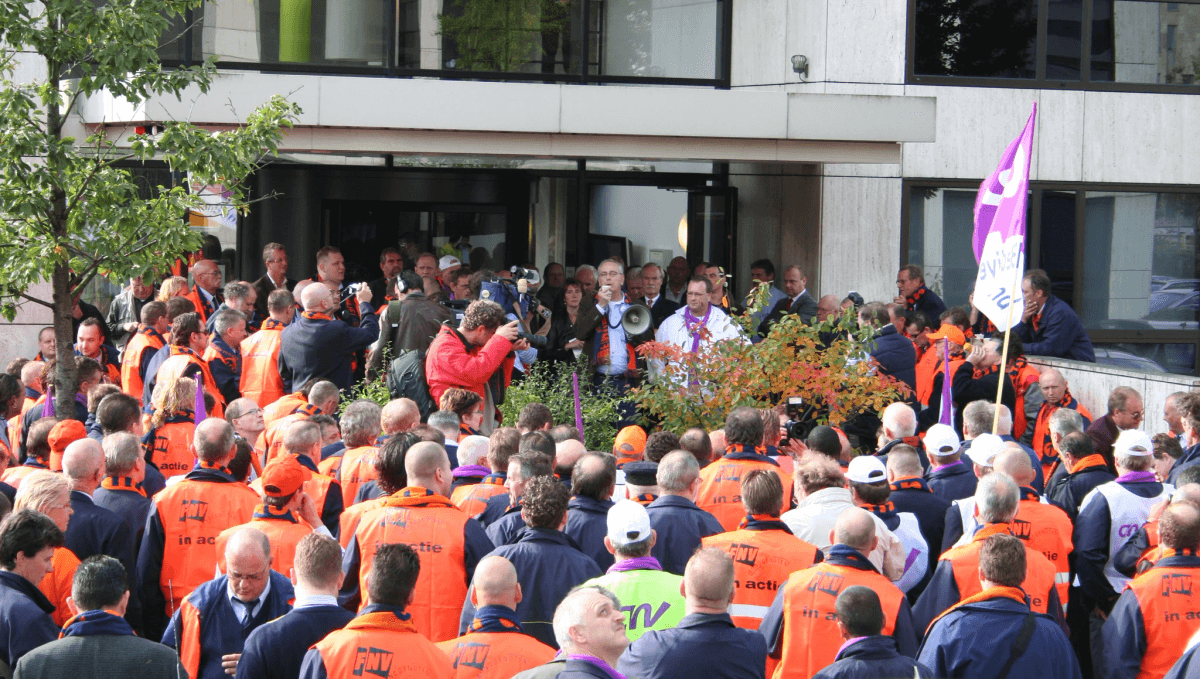
The paradox
An often heard claim in the social sciences is that strikes occur most often, not during crises, but in the prosperous years after. As this is counter intuitive, it sounds like an interesting problem. One reason that might explain this phenomenon is that people only strike when they dare to. In economic prosperous times the job market has a shortage, and employees can demand more favourable conditions. Another argument is that of relative deprivation. When a more prosperous era starts, not everyone will benefit at the same time and degree. Thus people may become unhappy, when they see others already benefitting from the improved conditions and as a result they will strike for equal benefits.
To see whether these arguments makes sense, we turn to the Netherlands, in the period 1970-1985. The Netherlands was struck by two crises after which more prosperous periods followed.
Figure 1. Total number of strikes in the Netherlands and the GDP per capita. [NB: GDP per capita not in query as there is no data on it]
There's no apparent correlation between GDP and the number of strikes. But to be fair, we have regarded strikes all to be the same (e.g. same type, same number of persons involved, equal length and same industry). One way to distinguish between types is to study the different number of strikes by industry.
We can also look at the regional distribution of strikes. This is another way to visualize the above, as types of industries are clustered regionally.
The Dutch Strikes Database
What follows next is a series of queries useful for media coverage. You can adapt each query to your needs. You can also download the full database.
Search the database for strikes of a given company
Strikes for a given company
What are the five most recent strikes in the database? Click on a strike for details.
The five most recent strikes in the database
What strikes where there in the year 1810? Replace 1810 with any year of your liking.
Strikes in a given year. Enter the year of your interest.
Compare strikes between provinces over time.
Number of strikes by province over time
Simple example of a pivot table. Type of strike by outcome. Click on 'Try it yourself' to edit the table.
A simple pivot table example
The same pivot table as above. But now 'place' has been added to the pivot and numbers are coloured by size. This is also known as a heat map.
Another pivot table example. Now viewed as a heatmap. Click on 'Try the query yourself' to alter it.
Sources
**header image **
Mauritsvink - Eigen werk, Publiek domein, https://commons.wikimedia.org/w/index.php?curid=3279828